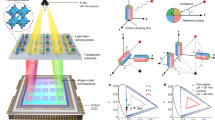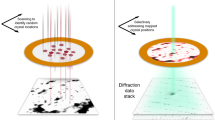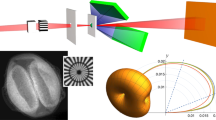Abstract
ORDINARY metals are composed of aggregates of small crystals. These small crystals may be made to grow, by suitable processes, to very much larger ones, so that we can obtain a test piece of proper size composed entirely of a single crystal of a metal. Such test pieces of single crystals of metals do not, as a rule, possess plane faces, that is, the external forms of crystals, but X-rays afford us a means of determining the orientations of the axes of such crystals. A. Müller (Proc. Roy. Soc., London, 1924) photographed the Laue-spots at various orientations of the specimen, and from the position of the characteristic K-radiations of the anticathode on the photograph, he determined the orientations of the axes of the crystal. Next, T. Fujiwara (Mazda Kenkyu Jiho, Tokyo Electric Co., 1926) achieved the same purpose by finding the characteristic K-radiation in some of the ordinary Laue-spots; while H. Mark, M. Polanyi, and E. Schmid (Zeit. für Phys., 1923), and K. Weissenberg (Zeit. für Phys., 1924) applied the method of rotating the crystals. All these authors employed a narrow and nearly parallel beam of X-rays, so that only a small portion of the specimen could be tested at one time.
This is a preview of subscription content, access via your institution
Access options
Subscribe to this journal
Receive 51 print issues and online access
$199.00 per year
only $3.90 per issue
Buy this article
- Purchase on Springer Link
- Instant access to full article PDF
Prices may be subject to local taxes which are calculated during checkout
Similar content being viewed by others
Author information
Authors and Affiliations
Rights and permissions
About this article
Cite this article
YOSHIDA, U., TANAKA, K. Laue-Photograph taken with a Long Slit. Nature 118, 912–913 (1926). https://doi.org/10.1038/118912a0
Issue Date:
DOI: https://doi.org/10.1038/118912a0
Comments
By submitting a comment you agree to abide by our Terms and Community Guidelines. If you find something abusive or that does not comply with our terms or guidelines please flag it as inappropriate.



